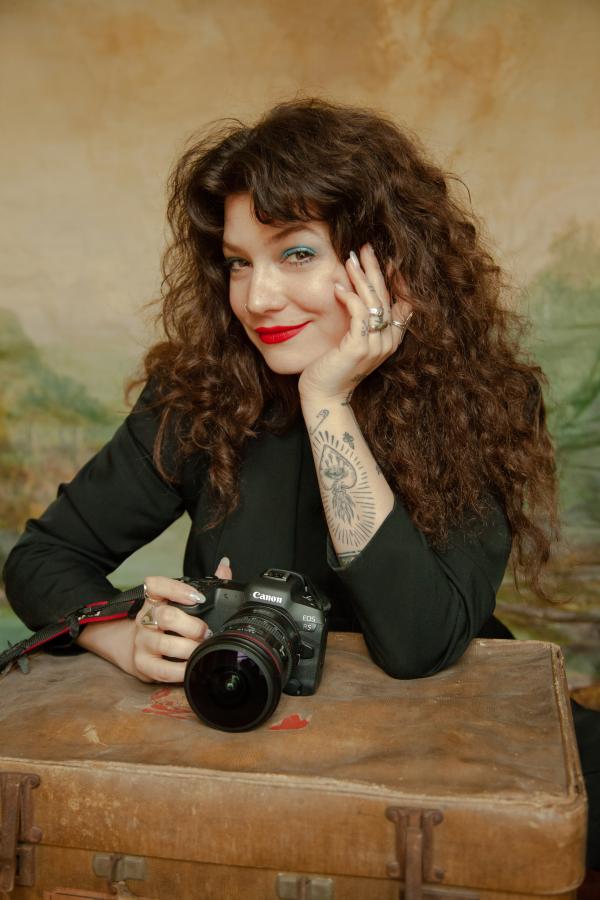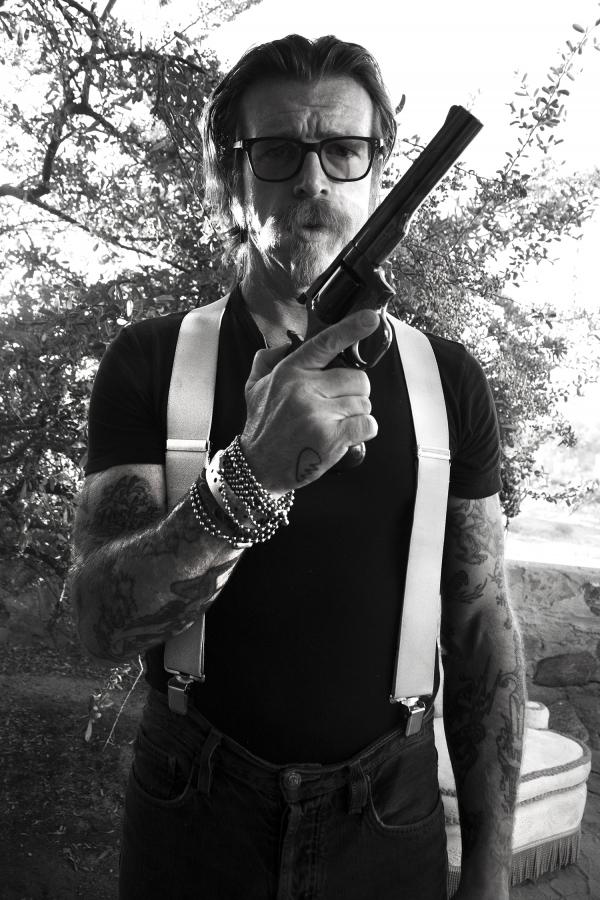– How do you get Iggy Pop to stand in front of your camera?
– Obviously, I had to build a career to be in a position to be approached by a magazine with this request. This is how I was able to photograph Iggy Pop on stage at a concert. But the real turning point was when I took an actual portrait of the American band Eagles of Death Metal when they performed at the Desert Daze music festival in California. I was given five minutes to take pictures of them backstage. This is very little time, so I tried to squeeze everything in: I took group photos, then a portrait of each person. And they were clearly enjoying it, so the five minutes turned into ten, fifteen, then twenty minutes, until the singer, Jesse Hughes, looked at me and asked, “Do you wanna see my gun?” , which obviously can have several meanings, to which I replied, of course. He then went into his room and took out his Dan Wesson revolver, which he began to load in front of my camera. Then the photo was taken. This was a very defining experience, because from there I started to make portraits of musicians, singers and actors in addition to fashion photos.
– The fashion of the seventies can also be felt on the subjects that stand out in your pictures. Why do you love this era?
– When people ask me how I would describe my photography style, I usually say that in my pictures the picturesque visuality is mixed with the style elements of rock ‘n roll. The latter is also felt in the styling, make-up, hairstyle and selection of models. Of course, when I started taking photos, it wasn’t such a conscious decision, but over the years, my own style slowly developed. He was inspired by visual arts, especially the Pre-Raphaelite group of artists founded in Victorian England in 1848, whose members were considered rebels because they longed for the Middle Ages. Also, I was inspired by rock music, as I photographed concerts even as a teenager, and I wanted to be close to the musicians and work with them.
The painterly inspiration can also be seen in action in my self-portraits: in one picture I am Joan of Arc with a sword in my hand, in the other Ophelia swimming on the surface of the water, among flowers,
evoking a famous painting by Pre-Raphaelite artist John Everett Millais.

– How did your career start, how did you end up in London, one of today’s sanctuaries of the fashion world?
– I started my career at home, I moved from my birthplace, Békéscsaba, to Budapest at the age of eighteen, where I first studied film at ELTE, then studied photography at MOME, and even then I met many people who are involved in the profession. At the age of twenty-three, I moved to London, where I studied fashion photography, while I worked as an assistant in a photography studio, and on weekends I was a salesperson in a store. During this time, I built my career, sending tons of emails and Instagram messages to fashion designers, magazine editors, and record labels. In the meantime, I realized that the most important thing in my profession is building relationships, because a photographer can have an amazing portfolio and be the most talented in the world if it doesn’t reach the right people. Of course, I got an answer to two out of a hundred e-mails, but that’s in the deck. Over time, I got an agent in Paris, who also gave me good jobs.

– This year you had a joint exhibition with your father, the photographer Martin Gábor, at Mai Manó Ház in Budapest, where we saw his pictures taken in Hungary in the seventies, and your photos taken in London after the turn of the millennium. Looking at the works, it was hard to tell when and where they were made. I guess that was the intention.
– Yes, father started his career as a photojournalist in the seventies, he also took pictures of young people partying in many youth clubs, which he recently reviewed and digitized. I marveled at many of the photos, as did he, because they were like the ones I took in England after the turn of the millennium. Because when I go to London to have fun, I always have an analog 35 millimeter camera in my hand, and I also photograph the faces, figures and concerts around me, so I document my nights.
It was exciting when we put my father’s and my pictures next to each other at home, because we often couldn’t tell which one was taken in Békéscsaba in 1979 and which one was taken in 2016 in East London.
Source: nepszava.hu


